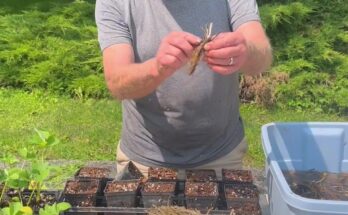Seeding Grass In My Enormous Yard
Transforming a vast, empty yard into a lush green lawn is no small task. When I first decided to seed grass in my enormous yard, I knew it would take time, patience, and consistent care. However, I also knew that the result—a beautiful, soft, green carpet of grass—would be worth the effort. Here’s how I tackled the process and what I learned along the way.
The first and most critical step was preparing the soil. Because the area had been neglected for years, the ground was hard, compacted, and full of weeds. I began by removing the existing vegetation using a combination of a string trimmer and weed killer. Once the weeds were gone, I rented a rototiller to loosen the top six inches of soil. Tilling such a large area took several days, but it was necessary to allow the grass seed to establish strong roots. After tilling, I spread a thin layer of compost and raked it into the soil to improve nutrient content.
Next, I had to choose the right type of grass seed. Since I live in a region with hot summers and cold winters, I selected a blend of Kentucky bluegrass, perennial ryegrass, and fescue. This mix offers durability, drought resistance, and a soft texture underfoot. I bought several large bags of seed, calculated based on the square footage of my yard, and used a broadcast spreader to ensure even distribution.
After spreading the seed, I applied a light layer of straw mulch to protect the seeds from wind, birds, and direct sunlight. The mulch also helped retain moisture, which is crucial during germination. With such a large area, it was tempting to rush through this part, but I made sure to cover the entire yard evenly.
Watering became my next major challenge. Newly seeded grass needs frequent, gentle watering to keep the soil consistently moist. I invested in a system of oscillating sprinklers and timers to water different zones in the yard three times a day. This schedule continued for several weeks until I noticed strong, healthy sprouts emerging. Gradually, I reduced the watering frequency but increased the depth to encourage deep root growth.
As the grass began to grow, maintenance became key. I avoided mowing too early and waited until the grass reached about 3 inches in height. Then I gave it a light mow, cutting only the top third of the blades. This helped stimulate growth without stressing the young grass.
By the second month, the transformation was dramatic. My enormous yard, once brown and bare, now shimmered in rich shades of green. Birds came more often, and I found myself spending more time outside, simply enjoying the view. It took a lot of work, but seeding grass in my enormous yard became a rewarding journey—one that taught me the value of patience, planning, and persistence.
Now, when I walk across the yard barefoot or host a picnic under the sun, I feel the pride of having nurtured this landscape from the soil up. It’s not just grass—it’s a symbol of growth, commitment, and the joy of creating something beautiful from scratch.














